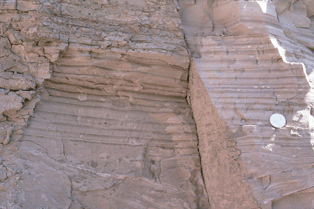
Fukui Prefecture is a prefecture of Japan located in the Chūbu region of Honshū. Fukui Prefecture has a population of 778,943 and has a geographic area of 4,190 km2. Fukui Prefecture borders Ishikawa Prefecture to the north, Gifu Prefecture to the east, Shiga Prefecture to the south, and Kyoto Prefecture to the southwest.

Tsuruga is a city located in Fukui Prefecture, Japan. As of 29 June 2018, the city had an estimated population of 66,123 in 28,604 households and the population density of 260 persons per km2. The total area of the city was 251.39 square kilometres (97.06 sq mi).

Obama is a city located in Fukui Prefecture, Japan. As of 1 August 2018, the city had an estimated population of 29,435 in 12,057 households and a population density of 240 persons per km2. The total area of the city was 233.09 square kilometres (90.00 sq mi). Obama gained publicity in the United States and elsewhere in 2008, as it shares its name with Barack Obama, who was running for, and later became, President of the United States.

Takayama is a city located in Gifu Prefecture, Japan. As of 1 January 2019, the city had an estimated population of 88,473 in 35,644 households, and a population density of 41 persons per km2. The total area of the city was 2,177.61 square kilometers (840.78 sq mi) making it the largest city by area in Japan. The high altitude and separation from other areas of Japan kept the area fairly isolated, allowing Takayama to develop its own culture over about a 300-year period.
Mikata was a town located in Mikata District, Fukui Prefecture, Japan.

Mihama is a town located in Fukui Prefecture, Japan. As of 1 May 2018, the city had an estimated population of 9,643 in 3175 households and the population density of 63 persons per km². The total area of the town was 152.35 square kilometres (58.82 sq mi).
Mikata is a district located in Fukui Prefecture, Japan.
Kaminaka was a town located in Onyū District, Fukui Prefecture, Japan.
Onyū was a district located in the Wakasa Region of Fukui Prefecture, Japan until 2005.

A varve is an annual layer of sediment or sedimentary rock.

Mikatakaminaka is a district located in Fukui Prefecture, Japan. The district was formed on March 31, 2005 at the same time as the merger of the towns of Mikata and Kaminaka forming the town of Wakasa.

Wakasa is a town located in Fukui Prefecture, Japan. As of 1 April 2018, the city had an estimated population of 14,577 and the population density of 82 persons per km². The total area of the town was 178.49 square kilometres (68.92 sq mi).

Fukui Railway is a bus and railway company located in Echizen, Fukui Prefecture, Japan. It owns and operates the Fukubu Line between Tawaramachi Station in Fukui and Takefu-shin Station in Echizen.

Mikata Station is a railway station in the town of Wakasa, Mikatakaminaka District, Fukui Prefecture, Japan, operated by West Japan Railway Company.

Lake Suigetsu is a lake in the Hokuriku region of Honshu, Japan, which is one of the Mikata Five Lakes located in Mihama and Wakasa, Fukui Prefecture, close to the coast of the Wakasa Bay in the Sea of Japan. Since 1993, it has been attracting the attention of scientists because of the undisturbed nature of the water for many thousands of years. It is possible to identify the annual deposits of silt in a similar manner that tree rings are identified.

In Japanese history, the Jōmon period is the time between c. 14,000 and 300 BC, during which Japan was inhabited by a diverse hunter-gatherer and early agriculturalist population united through a common Jōmon culture, which reached a considerable degree of sedentism and cultural complexity. The name "cord-marked" was first applied by the American zoologist and orientalist Edward S. Morse, who discovered sherds of pottery in 1877 and subsequently translated it into Japanese as Jōmon. The pottery style characteristic of the first phases of Jōmon culture was decorated by impressing cords into the surface of wet clay and is generally accepted to be among the oldest in the world.

The Torihama shell mound is a shell midden and remains of an Early Jōmon period settlement located in the Torihama neighbourhood of the town of Wakasa, Fukui, in the Hokuriku region of Japan. It is a waterlogged midden site that was occupied mainly from the Incipient Jomon period to the Early Jomon period from 12,000 to 5,000 years ago.

Wakasa Mikata Jomon Museum (若狭三方縄文博物館) is an archeological museum located in the town of Wakasa, Fukui Prefecture, Japan. It is dedicated to the exhibition of Torihama shell mound as well as varve, oldest of which dating back to 70,000 years ago, discovered in the bottom of Lake Suigetsu, one of the Five Lakes of Mikata. The founding chairman is Takeshi Umehara.

Mikata Five Lakes, also called the Five Lakes of Mikata, are a series of brackish and freshwater lakes located in Mihama and Wakasa, Fukui, Japan, which are close to the coast of Wakasa Bay. They consist of Lakes Mikata (三方湖), Suigetsu (水月湖), Suga (菅湖), Kugushi (久々子湖) and Hiruga (日向湖). These five lakes are all located in Wakasa Wan Quasi-National Park. In 2005 the lakes were designated as a Ramsar site. The Lake Suigetsu is famous for its varves, which were adopted as a global standard for dating geological and historical relics in 2012.

The Tenshō earthquake occurred in Japan on January 18, 1586 at 23:00 local time. This earthquake had an estimated seismic magnitude of 7.9, and an epicenter in Honshu's Chūbu region. It caused an estimated 8,000 fatalities and damaged 10,000 houses across the prefectures of Toyama, Hyōgo, Kyōto, Osaka, Nara, Mie, Aichi, Gifu, Fukui, Ishikawa and Shizuoka. Historical documentation of this earthquake was limited because it occurred during the Sengoku period.





















